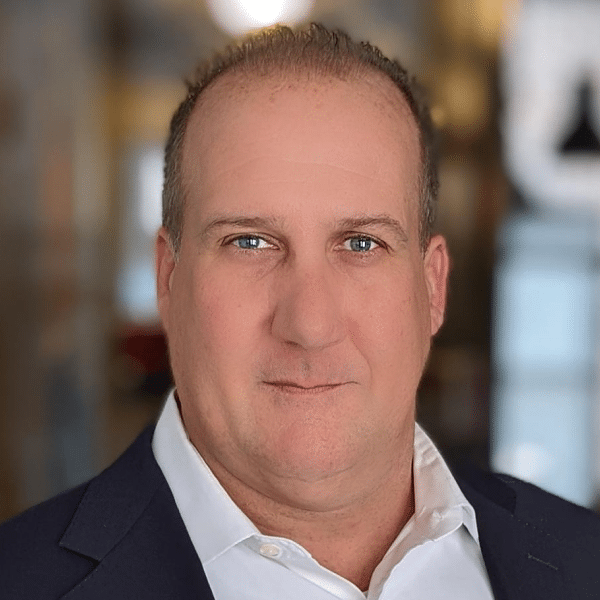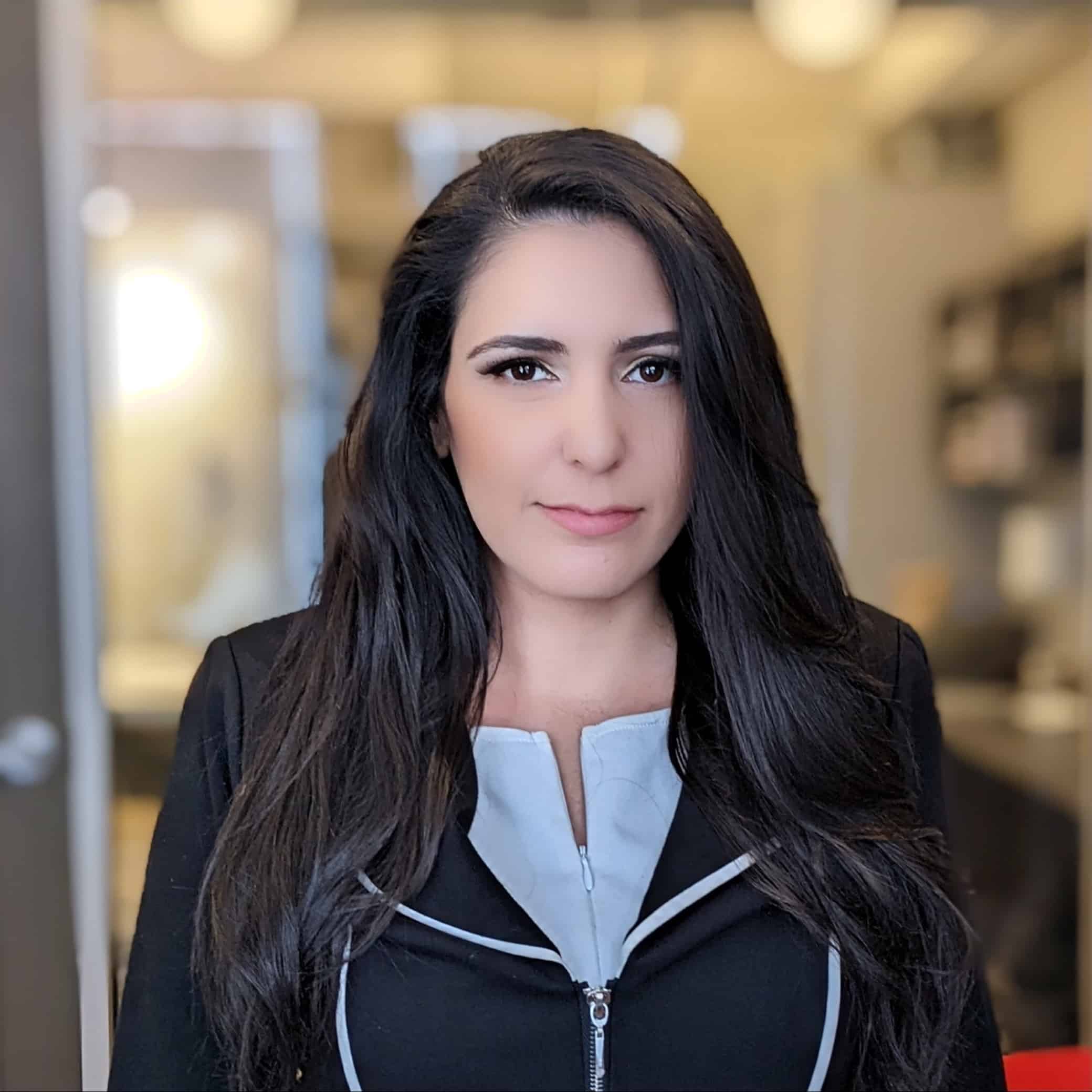Shifting To An Automation-First Mindset In Marketing
Mark Simon
Vice President of Strategy at Celigo

Get ready for some real talk about marketing in the age of automation. Mark Simon joins Tessa Burg on our latest episode of the Leader Generation podcast.
They get into why strong leadership and a straightforward plan matter more than ever in digital transformation. They break down how clear communication and getting everyone on the same page are key to making automation work for your business.
“With an automation-first mindset, companies free up their resources to spend time on the things that add value to their business.”
In this episode, you’ll hear why it’s smart to get your data house in order before bringing AI into the mix and why running fast into automation without a plan can lead you to more mess than success.
This episode is filled with practical advice for marketers who want to use AI and automation strategically to grow their businesses successfully.
Highlights From This Episode:
- Automation mindset
- AI and automation
- Digital transformation
- Business strategy
- Leadership and communication
- Data quality and strategy
- Agile business processes
- Modern automation tools
Watch the Live Recording
Tessa Burg: Welcome to another episode of Leader Generation, brought to you by Mod Op. I’m your host, Tessa Burg, and today I’m joined by Mark Simon, VP of Strategy from Celigo. Mark, thanks so much for joining us today.
Mark Simon: Thanks, Tessa. It’s, it’s great to be here. I appreciate you inviting me and it’s good to speak again.
Tessa Burg: Yeah. Yeah, Mark and I did a podcast together on Celigo’s podcast channel, and it was so fun and so insightful. I wanted to have Mark come over and talk to us about the automation mindset. So Mark, before we get into that subject, tell us a little bit about yourself and your background.
Mark Simon: Sure, Tessa, thank you. My background. So I originally, if we go way back, I started out my career as a software engineer. So developing, writing code and was really, did a lot of work in these sort of, what, I think it was the wild west days of e-commerce, so to speak. And a big thing for me was I was on a, the founding team in CTO of an e-commerce company, a high-growth e-commerce company here in Seattle. And that was really my transition from being a technologist to being a business leader and really going from thinking about the technology all the time and nuts and bolts of thing, the wiring, so the bits and bytes, if you will, to thinking, transitioning, to thinking about, okay, how to achieve business goals, how to, and then how to leverage technology to do that. And from there, after I exited, I went to, I got, I thought I was gonna take a little detour into consulting and that little detour turned into a much longer stint, and I led a professional services practice for about, gosh, it was almost 10 years. So, and, we were a boutique consulting firm focused on really at its heart, on digital transformation and automating a lot of mid-market and enterprise businesses. So through that time, my team implemented about 500 clients. So I got to see like a ton of what worked, what didn’t work. We had an e-commerce practice, we had custom development practice, we did a lot of ERP and integrations and ERP implementations, then integrations along with that really, you know, really all about automating these businesses. So I saw what worked and what didn’t, and more importantly, like the approaches that the companies took to and how they thought about it had a massive impact on the outcomes, like dramatic, more than almost anything. And then when, when that firm was acquired, I wanted to go to software. I had some large software clients and that would, to be at a high-growth software company was really my next goal. And then I joined Celigo about five years ago as the VP of strategy there. And this has been really interesting because now still in the automation space, I’m still working with companies that are trying to automate their business. And at Celigo, we are in what’s called an iPaaS an integration platform as a service that we’re, we’re platform that’s connecting the applications, particularly focusing on SaaS apps, connecting those and integrating the data movement between those. So I got to see this across our 5,000 customers, the same things, the same patterns, like who’s successful, what companies struggle, again, across a really broad spectrum of the market from our Fortune 500 companies all the way down through the mid-market. And so got an opportunity to see a lot of patterns through that.
Tessa Burg: I love your story. I didn’t realize we have some similar crossovers. So when I was at a software startup, it is funny that switch from making the thing, to trying to bring a bunch of people together to create a platform of many things. And an observation that I made was how important clear leadership and direction and communication was. And it’s such a big shift because I was so used to receiving like the instruction, the requirements, and sort of sitting in a seat of sometimes frustration of like, well, I did do what you asked me to do. And they’re like, we’re using the same words, but there are different definitions. And then being in the seat where you can really help align underneath the leadership and the direction and be that translation layer. So.
Mark Simon: Yeah, I think you’re hitting on a really key thing around that translation layer. And what I, one of the biggest things I learned outta consulting was we did a lot of technical work, and that was great. And, and we were known for that in the space that we are in. And clients would often show up and saying with very specific ideas of what they wanted, Hey, I want this thing. And, and I always, like, I kind of liken it to fruit a little bit. Someone shows up and they, they describe an orange to you, I want this fruit. And it looks like, and they describe basically an orange to you, and they say, I want that. But maybe the most important thing I found was, was the, like stepping back and no, almost the more conviction they had on that, that’s what they needed. The more important it was to step back and really understand, well, what business problems are you trying to solve? Why? And work higher level up. And to the point that sometimes you get a lot of pushback and be frustrated, be like, oh, no, no, we don’t need to get in. You don’t need to know our, our company goals for this.
Tessa Burg: Yeah.
Mark Simon: Like, no, if you invest a significant amount of money in this project, I absolutely need to know your company goals from the top down. And then, and then really understanding the stakeholder, what’s gonna, what’s their role in that? And that almost always led to an adjustment for the better and often a significant adjustment in what they really needed. Because back to the fruit, they’d ask for an orange, but they really needed an apple, but they had never seen one before, so they didn’t know to ask for that. But by understanding the business goals, we could say, hey, this solution is, is similar but, but different, and this will better fit your needs. And that was really, that wasn’t a, there was a technical outcome to those things often, but it really stemmed from a business understanding, a better business understanding as a foundation to technical execution. And I find that is, is often, I still often, you know, a place where companies of all sizes really struggle.
Tessa Burg: Yeah, I agree. So that brings us to our topic today, you know, because whether it’s an orange or an apple, it’s just as important how we get there and how we scale it. So why is it important for us to talk about this automation mindset at this time with so much change going on in really the enterprise data and marketing space?
Mark Simon: Well, I, the, because there is so much change. So that change the price, the pace I think we’ve all seen as business leaders over the last several years, let alone the last 20, the pace of change is there’s accelerating, right? It’s increasingly increasing. And in the last five years have been, you know, almost staggering in the amount of change we’ve seen. And so as an under undercurrent to that, the companies that have performed best and been able to, with that change, there’s both crisis and opportunity. And so many things that present as crisis can present is game-changing, foundational and fantastic opportunities for a company. But you have to be agile enough to adjust and take advantage of that. And you can’t, if you don’t have the right systems and approach to your systems in place. You haven’t automated the business enough, but automated it in a flexible way to be able to take advantage of those things. And I think that’s ultimately the driver that, that a true agility, a modern business has as a whole constellation, a galaxy of systems in it and all these processes moving through. And you’ve gotta get those processes defined. You’ve gotta get those systems connected, the data moving flow flowing through that. And the companies that do that well and do that in an agile fashion, they just, they unlock, really unlock their go-to-market potential. And they both, it, it’s not just about operational efficiency, about, it’s about that agility. And so by adopting a, we call it an automation first mindset, they can approach these things and then free up their business, their employees, their most important resources really to spend their time working on the things that add value to the business and then respond to these changes and be able to quickly respond and adapt. And that really is, is what that automation first mindset gives a company in the modern age.
Tessa Burg: I think a lot of marketers are familiar with agile processes and feel like some love the word agile, and some are like, oh my God, all agile means to me is things move too slow because I can’t request anything that’s longer than two weeks. But in this context, when we’re talking about, you know, the landscape is changing and what we’ve seen is some people buckle down, they’re like, what we’re doing is working, you know, tried and true principles of marketing will still be successful. We have all the data we need and we don’t wanna jump at trends where agile really means like, make sure you’re not making too many assumptions. And where, to your point, do we have a problem? Do we have a conflict? Do we have too much manual work? And if we solve that, what does success look like and how can we iteratively get there? What have you seen sort of block people from starting to make, take that first step to the automation mindset or I don’t know, I don’t know if buckle’s the right word.
Mark Simon: Yeah.
Tessa Burg: Like be scared of like, you know, starting down a road of change and doing things differently.
Mark Simon: Yeah, definitely. And before I answer that, I think you hit on something really key with agile, and it, it’s, that word is, is an overloaded term because, and it’s good reminder talking to a CTO the first time. They, you know, when you hear that word, you’re like, oh, you’re thinking, you know, from a development perspective of agile and scrum as a way of executing your development and in some cases your business process management and evolution. And we really think, and that’s all true, but when I talk about a business being agile, I really set that aside. That’s a, that’s a method of executing on your business. And really, if you think of an athlete being agile or a person or an individual, we talk about an agile business that’s really, that’s really what I’m referring to. Someone that isn’t stuck moving in a straight line, a business that isn’t stuck moving in a straight line, but can pivot quickly, can be nimble on their feet and can execute in new directions and respond to kind of the changing field of play, if you will. So, and, and I think that’s the key thing. And and I often talk to, it’s a good point. I often talk to like technologists and they’re like, oh, they’re thinking about, okay, agile or scrum or lean or something. And it’s like, no, it’s like, no, we’re talking about this as a business term, so should really think of another way to refer because it is so overloaded. But back to your point on how to get started, what’s holding companies back? I, you know, a big thing that I see is they often try to bite off, companies often try to bite off too big of projects, and it’s, and it’s tough because the biggest opportunity to increase automation, it’s often wrapped up in, in a foundational system change. So from my background, the two biggest things I typically see are a change in the ERP. So you’re getting a, getting a new ERP, typically a modern ERP. So it’s either a high growth business that’s kind of coming out of its nascent phase, and they need a, they need a modern cloud-based ERP to run the business on, or it’s a, it’s an older, it’s an older, more established company, larger, and it’s taking initiatives to adopt cloud applications, whether it may be for the core of the organization or for parts of it, for the faster moving agile, more sort of nimble parts of the business that they need to be more agilely start adopting these, these foundational SaaS apps or they’re adopting, say you’re moving in the direction of say, a new sales channel. So that might be a new e-commerce site that might be new market moving into new, online marketplaces. All of these, these tend to trigger this implementation work that leads to business processes. And the intention there is to automate more of the business. But where a lot of companies struggle with, and I, and I see that really most, most often is that they struggle with the business process requirements and the business process design in order to automate. Because if you automate the wrong thing, the wrong process, you just have automated, you’ve automated go, you’ve made yourself move in the wrong direction more quickly. So, and, and so that doesn’t do anybody any good. And then likely if you’ve done that in the wrong, used the wrong method or say a legacy tools or approach, you’ve now created this very rigid course that’s difficult to change. So you’ve gone on the wrong end. And so that precursor work around that process, understanding your business, understanding the business process, making sure that you’re, you’ve got, you understand it well enough and then moving forward with something small is really important because this gets, gets so, so often tied up in those larger projects that can be, that can be a barrier or there’s often kind of a poor association. It’s like, oh, auto, someone’s talking automation and digital transformation again, oh no, that’s, that they’re gonna try to proverbially boil the ocean again. And that’s not the case. We see tremendous amount of success in companies that adopt a more grassroots approach sometimes where it’s, where it’s really any leader, it’s not just IT, it could be a, you know, and very often a market will see this with a marketing leader will say, we’ll look at the business, say, Hey, we’re gonna bring in a new system here and then just say, okay, we’re gonna bring this new system in and this new app in to help our marketing processes. And they say, well, how can we automate that? How can we automate everything that touches it? Okay, we’re, we’re bringing this in to solve a problem, but instead of just letting it sit there, say, well, how can I, well, what can I do to automate this? How do we, how do I plug this in instead of waiting for those issues to come up later, break those down. It might be six months, 12 months later, say, oh, why aren’t we getting value from this app? Well, very, almost always, you’re not getting enough value from apps that you purchase and implement because you’re not, you’re not automating them into the rest of your business. So by, by thinking about how do we automate that, and then thinking enough about the business process it fits into, and, but not overdoing it, you can start relatively small and build automation in little pockets and with a team, and you don’t even have to, often we see companies doing this without even relying heavily on it. They do that like within marketing, marketing ops teams, being able to automate and plug these in and getting maybe oversight and guidance from IT. But if you pick the right tools, flexible, modern tools for automation and integration, you can now you kinda get that flywheel going of everything that you add, or you touch, you’re making better, you’re making it more automated. And then you get, you get higher quality data out of that and you’re really laying the foundation for future growth. And then often that gets that kind of can blow up then and get visibility in other departments and then top down, and then it can get adopted is is more of a top-down initiative in organizations, but it’s really, without really having that, that grassroots, you know, departmental level people on the ground asking themselves, how can I automate something? How, how can I, how do I connect this in with the rest of the business? You never really get there, even if it is a top-down initiative.
Tessa Burg: Yeah. So right now in marketing departments, I know a lot of, you know, VPs, directors, almost every level in marketing is looking at implementing new apps because they, you know, cookies are going away. So we have to have different points of distribution and that also means we need different apps and different ways to capture first-party data. We need new creative. So there are a lot of these opportunities that when we’re evaluating tech and we are about to select tech, to take a step back and look at that business process design. If I am a marketer and I am in the, I’m in the thick of it. I mean, I think everybody is, I’m gonna change an application, add an application, what, how, tell me a little bit more about how do I start to think about that business process or what’s some good steps I can take to document it, visualize it and start to get buy-in to bring others along on automating around one that moment and two that specific app.
Mark Simon: Yeah, I think the, the biggest thing to realize is, and the example you used around the first-party data changes, the evolution, so to speak in, in marketing is a fantastic example. But the first thing they can do is simply just realize that when we, when these changes are a continual, are continuing, the, the digital evolution of organizations is you’re, you’re in your, your organization is getting every, every time you adopt a new tool to help the move these processes forward, you’re kind of taking another step on that digital transformation journey or that automation journey as a business and just explicitly thinking about it that way is helpful. It changes your, it changes your approach to it and it also creates a different ownership. So, and I just, you’re not just, hey, I’m buying this app to solve this problem. Hey, I’m adding another piece into the greater puzzle of the business. And as a leader choosing that and the being the executive sponsor, primary stakeholder for that, I, you’re, you’re responsible for that and you’re responsible for helping move the whole business forward. It’s not just IT about how that fits in, and just that mindset shift, mindset shift is really helpful, I think in, and there’s really a key takeaway. It’s like, think about it differently. I always ask that question, how can we automate this? And we’re automating, we’re adding something in, but don’t create a new data silo. As soon as you realize, oh, this is part of our automation journey as a company, say, okay, how can I automate this and do that if you do that first, that, and that simple question is the biggest thing that I can see changing companies right now, and the companies that, that adopt that question and routinely ask that question and believe in the power of that, you see, it really throws things in another, it starts to move things in another direction and it kind of throws the status quo, starts to throw the status quo on its head. It’s like instead of being like, oh, well we’ll just throw some people at that, or like, you fall in that old the old trap or we’ll, and you end up with the same problem, but by, by thinking, okay, always asking what can be done to automate this, it’s fundamental and it’s really the one, the one takeaway I always want business leaders to understand, just ask that question. How can we automate this? Because that’s ultimately what’s behind the whole effort of what you’re trying to do, is you’re solving a business problem and you’re trying to solve that business problem by automating something that was manually done before, but it often gets missed in the fanciness of buying and the fun of buying new software.
Tessa Burg: Yeah, I agree. And when you take a step back and say, automate this, it is important to get more context. Where does this sit? What is the data coming in? What is the data coming out? Who else is interacting with that data? And often it will lead to better understanding the processes around it that can be connected to that automation. I think that when we are looking at a business problem and here’s how we’re gonna solve it, and we don’t step back to see the inputs outputs and focus first and how we’re gonna measure success, like what do we need to get out of this? We might miss some of that context of making use or almost like having an appendage off a process that might already exist where we can sort of maximize our use of an overall platform or integration.
Mark Simon: Yeah, exactly. And a big, and those are excellent points. And one of the biggest problems I’ve seen continually across system implementations over the years has been this too much focus on the thing being built or the thing being bought and implemented in looking at it too tightly with almost with tunnel vision. And so that step back, always that step back to be like, okay, well what’s the ultimate business objective of this? And what KPIs are we trying to impact with this project? What is it? And making sure that everything ties down. And then because that directly relates to that business process that’s that’s underlying. And do you understand that business process? Do we have it mapped out well enough to move forward? And this is like a really, this is a key balancing act. You have to do enough to move forward but not get paralyzed in having to define it to the, the 99.99 percentile. You have to get close enough to move forward and automate your primary use case. And this is a big thing that I see companies getting hung up on is they get to like, okay, well we got the 80% planned out, but we’ve got, we can’t quite figure out the processes for the 20% yet. And that’s okay because sometimes those aren’t feasible to be automated yet, but automate 80% of it and you’re gonna get a tremendous amount of value. So the process is finding that right balance, regardless of size of company in which processes to automate, define those, and then build that out really has a big impact on that success.
Tessa Burg: I feel like this conversation can be a roadmap for an initiative we just kicked off internally. I’m like, I, you know, I’m not sure I’m giving these steps to our team. Our AI council right now is breaking into four different tracks and we’re looking at how do we automate specific, very manual processes that I know a lot of people do, you know, around data analysis, data transformation, and all marketers are dealing with a ton of data. But one of the things we do said, I am like, you know what? I wrote it down like, you know, what I’m gonna have to tell the team is first is we’re all coming with a lot of ideas. We have access to very powerful tools now. And to your point, we all think we know exactly what we need to do, but first we have to take a step back and really map out the whole process and sort of circle those areas and make sure that we are aligned to the overall business objective of doing more with less. Look at the investment that we’re making, what it’s connected to, before just jumping in and saying, oh my gosh, I just figured out a way to get all of my, all of the data that I manually exported out of all of these different things imported into this other platform to make this, you know, one deliverable, this one dashboard. But it really could be, you know, take a step back, wait a minute, what is the process today? Where am I saving the time? Where do we need human in the loop to intersect and check the quality? And how are we making sure that we’re not creating disparate systems and disparate, you know, data output visuals or disparate data inputs. And we were saying that like, ooh, we’re gonna have to, we’re gonna have to really make sure we go through this exercise of, you know, process first and process visualization for just jumping in and playing with all the fun tools.
Mark Simon: Yeah. And that’s super key Tessa, the add in AI and there’s, there’s, there’s so many, there’s different levels of AI, right? We’ve seen a lot of, you know, in the popular thought in collective mind share, the Generative AI and leveraging of the large language models that has really kind of brought that to the forefront. And that does a lot of really cool things. There’s some, some simple tasks that can be made much simpler. You know, editing and writing can progress much more quickly. And it also can be, can drive a lot of really good, I think of co-pilot, co-pilots a very common term nowadays and that that that co-piloting of something that someone was already doing. But some of the biggest AI impacts are around data, like around data insights that can be gathered from large, from data as a business. What’s being missed? What are the patterns that, that aren’t being seen that that really the, some very, very large transformational initiatives that require on have a foundation of that data. And that’s where it, it’s important just to realize that the AI tools are just another tool in the automation toolbox. So they’re new, shiny, really sparkly tool that’s super cool and fun to use. But some of the, the most powerful aspects of AI tools is, you know, more behind the scenes and much more in some ways you think of being as not as flashing, maybe a little more boring, but it requires quality data to use those. And the quality data is the outcome of a good business process that then has automation and integration to tie all the systems in the business together or as many as possible so that you have a, have a single system and a good, clear source of truth or multiple sources of truth, you know, many option, many architectures are acceptable and then you can layer these tools on. And the biggest thing I see around it is a lot of companies like trying to do that and jump in and they don’t really get where they want to go because they didn’t have that foundation right from the beginning.
Tessa Burg: Yeah.
Mark Simon: They didn’t have good data and they, they end up with, again, they’re automating junk so to speak.
Tessa Burg: Yeah. I feel like a lot of marketers get discouraged when you say like, you gotta take a step back and have a really sound data strategy or you gotta take a step back and make sure that your, how you handle data, how you transform and manage data for quality is done right first. So something that I have been trying to champion is more like parallel paths. Like there are quick wins.
Mark Simon: Absolutely.
Tessa Burg: But you do have to take that step back and say, what is my quick win versus where is data quality extremely important for me to be able to automate and scale this in a meaningful way? And I agree like when you jump right in, a lot of people jump, are moving fast to where they’re gonna see the most impact, which is actually the part where you have to go slow, go slow to move fast, whereas where you have to have a sound data strategy. But there you can get those gains if you have a parallel path of quick wins that are a much slower lift, but you have to start at the beginning to identify and break those apart.
Mark Simon: Yeah, exactly. And the, you mentioned parallel paths and I think that’s really, really key. I’ll use an example from a, from a recent client I was, I was working with, which is a CPG company. And so they’re dealing with a lot of data coming in from retailers. So retail point of sale data that’s coming in, they’re trying to get their hands on this and they know they need a new data solution, got very manual process trying to get this together, get the insights they need, they wanna willing to pull in other ex you know, multiple, new third parties and it’s a lot of work for them. And they’ve got a process that they built, very manual, but it kind of worked. But they real realized the scale of the business, they need to change this. And when we started working with it, you know, they also said, Hey, we’ve got this vision of this data warehouse and this data quality initiative and all of that was absolutely correct. That was the correct thinking. But that for them became such a large project. Like it was so enormous. Hey, we need, we don’t have a real data warehouse. We’re gonna need to create a data warehouse, we need a canonical data model. And it goes on and on. That’s this this big, it turns into this massive project. But, and that’s true. They need to do that to get where they want to go thinking from a, from a multi-year vision. Absolutely. But a lot of the value that they needed to get and to solve some of the problems here and now to drive the business forward, were also relatively easily fixed and attainable by doing, you know, it’s not the perfect solution, but a solution that worked in the here and now to bring data in from their different SaaS apps or different providers and drop it in, essentially clone it into a data store and just a apply their BI tool on it. So instead of somebody plugging this together out in Excel and Google Sheets and a database on their, on their laptop, it’s now functioning in a way that that could be automated and they could automate little pieces at a time and then eventually like merge that in with the greater initiative. And so that’s often like, I think a really key thinking that’s missed is, okay, how do I do the work towards the big thing, but how do I get to a solution that’ll provide me lots of value now and stepping back and not letting the, that perfect concept get in the way of near term progress, I think is is really important for leaders in an organization.
Tessa Burg: Yes, I definitely agree. And I also feel like as leaders you have to be disciplined to not put the same metrics of success on the parallel path, the smaller thing like-
Mark Simon: Exactly.
Tessa Burg: You, it goes back to that iterative process and you know, what, what do truly agile companies look like? You know, it’s not if we scrape off the agile definition and say this is an agile company, it’s a company that’s continuously making process or progress from their process and against different metrics. Not, we won’t, all we care about is X and anything else lower than, you know, did it impact revenue by X percent is a failure? Because you learn so much from each iteration that makes getting to that longer roadmap goal even that more valuable, even that more scalable
Mark Simon: Exactly. I think about something that I did earlier, way earlier in my career at the e-commerce company, which was had the hubris at the time that we built our own inventory control and order processing system. And really we had no business doing that, but we had a unique business processor on our product. And the time you think everything you do is so special and it had definitely had some unique aspects, but I always look at that and you know, within a couple years of launching that we’re like, okay, this isn’t gonna work and we need to move to more like something else. And sometimes I was kind of felt victim of thinking like, oh, well that was all wasted effort. We shouldn’t have done it. And the reality was we would’ve never been able to buy the right solution at the beginning ’cause we didn’t understand the problem and the business process well enough.
Tessa Burg: Yeah.
Mark Simon: And so by going through and that solution, we ended up building a solution like that over time, iteratively the first time because we didn’t, we at the time, we didn’t have the funds to invest to buy the right thing. We didn’t know enough to really buy the thing that would’ve set us up for the right growth. But by going through that process and at a certain point you got over it, it was far from wasted. And in fact it set us, it set the company up to set the right, the next foundation in that, that now 15 years later is they still used and it’s been foundational to their growth. And so I think sometimes it’s really important for, for people and for leaders that especially at the intersection of business technology to realize that, oh, you do something, you outgrow it as a company, but what you learned outta that is the most valuable thing of all.
Tessa Burg: So we’re gonna wrap it up and we have covered a lot of big points, so I’m gonna try the best that I can to summarize it. But if you’re sitting in a seat right now, anywhere in the organization, it’s first recognizing that you are in a time and a place of transformation and change. And to make the most of that, take a step back. Think about how does your process align to your business objectives. And I love what you said Mark, about, you know, it’s from the ground up, you know, can we identify some quick wins? Can we identify where we have a bigger opportunity to evaluate our data strategy and make sure we have quality at the center so we’re set up for success? And from there then be iterative, make sure you’re not going too fast. I felt like when you said, going too fast in the wrong direction, that’s basically how I navigate cities I’ve never been in. I’m like, I don’t know how to get to this place, so I’m gonna walk extremely fast in any direction just to see what happens. But not a great, not a great mentality for looking at how you get into the automation mindset. So, Mark, did I miss anything? Anything to add to it?
Mark Simon: No, I, no, I think you nailed it and everybody here listening, if they just ask that one question more often, oh, can we automate this? How do we automate this? You’ll start to see your business transform and it doesn’t matter whether you’re, whether you’re the CEO or you’re one of the lowest level employees or the newest employees in a company that question can, can change your business.
Tessa Burg: If the listeners want to ask you questions or learn more from you, how can they reach you?
Mark Simon: Sure, they can, they can always reach out to Mark, M-A-R-K at Celigo, C-E-L-I-G-O.com. That shows you how long I, I’ve been at the company when I, when I was the first Mark here. And then also find me on, on LinkedIn and yeah. But we’d be happy to talk how, you know, what can be done to help automate your business and help transform it.
Tessa Burg: All right. Well thank you Mark so much for joining us and until next time, I’m sure we’ll be talking again soon.
Mark Simon
Vice President of Strategy at Celigo

Mark Simon is the Vice President of Strategy at Celigo. He’s spent more than 20 years in technology roles such as software developer CTO, consultant and EVP of Services & Technology. Mark has with clients across several industries. His experience includes designing and developing automated processes for tasks like handing sales orders, managing subscriptions and provisioning.





